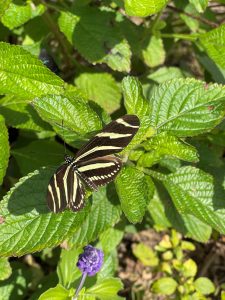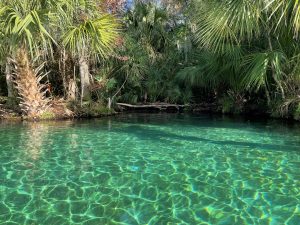If you are a nature lover, the topic of conservation can be both fascinating and frustrating, as we see the impacts of our changing environment on the wildlife species, human communities, and natural areas that we love. While the scale and complexity of many environmental issues at times feels discouraging, it is empowering to know that individually and collectively, we can shape a culture of conservation and care for the natural world that we too, depend upon.
This World Nature Conservation Day, we want to encourage you not to lose hope. Learn more about how to take action with this quick read.

5 Ways to Help Conserve Nature
1. Educate yourself and others.

How well do you know the natural world around you? Which rivers and other bodies of water run through your county or city? What kinds of wildlife do you share your neighborhood with, and what are a few common native plant and tree species that you may see around you?
Getting to know the answers to those questions can help deepen your sense of place, belonging, and connection with where you live. Learning about your local ecology also empowers you to understand how the natural world works, and the ways that our choices both positively and negatively impact the environment.
Nature is present everywhere– you don’t have to travel far! From backyards and neighborhood parks to street trees and birds in the sky, there are opportunities to connect with nature right where you are. You can also virtually explore the ecology of some of Sarasota County’s natural areas here, or find a Sarasota County park or preserve to visit in person. Don’t forget to spread the knowledge! Share what you learn about nature with your friends and family to help inspire others to be more ecologically conscious. Try participating in fun opportunities to learn together.
In the end, we will conserve only what we love; we will love only what we understand; and we will understand only what we are taught.
–Baba Dioum, 1968
2. Get involved- we are stronger together!

Wondering what is going on in your area, and how you can help? Try a quick google search for the environmental issues your community faces, and what efforts are being undertaken to address those issues. The good news is that there are likely others in your area who are aware of these issues, and have already created organizations and groups dedicated to making a difference. Getting involved in local solutions can help you connect with other like-minded individuals, build community, and take an active role in creating the change that you want to see.
Look for local citizen science projects to contribute to important research and data collection, search for local non-profits and environmental organizations, or become a Sarasota County volunteer!

3. Plant native.
What would it be like if our homes, yards, churches, businesses, and community centers were to create wildlife habitat and mimic important natural features with the spaces available to them? Backyards could become oases that offer food and respite to migrating and resident birds, critical pollinators, and sensitive amphibians!
Native trees and shrubs could provide people and wildlife with vital, cooling shade as summer days grow warmer. Bioswales and rain gardens could help filter stormwater and runoff, and allow that water to seep back into the soil. No yard? No problem! Growing native plants in pots on your doorstep or porch can provide habitat and food for important insects and pollinators too! You can also volunteer with local organizations to help plant native plants.
Designing our structures and landmarks to work with, support, and protect our environment is an invaluable way to help conserve nature. Learn how to get started with native and Florida-Friendly Landscaping here.
4. Slow down for wildlife.


While number 4 may not seem like it would have much of an impact on conserving nature, consider the following. In Florida, vehicle collisions account for approximately 90% of known black bear deaths (FWC), and 59% of known panther deaths (FWC). With a little over 200 Florida panthers remaining, each life lost to vehicle collisions matters.
Researchers from the University of Florida report that “Although Florida only ranks twenty sixth for land area in the United States, it currently ranks seventh for its total road coverage” (Rasmussen et al., 2023, par. 2). These roads often intersect wildlife habitat, and a variety of wildlife species are forced to make the dangerous trek across roads to find food, habitat, and to reproduce.
It is critical that we all do our part to respect speed limits and drive slowly and cautiously. Stay especially alert at night, in areas where wildlife are often seen crossing or injured by road strikes, and on roads near parks, preserves, bodies of water, and other wildlife habitat. Learn about wildlife crossings here, and remember to report injured, sick, or dead panthers and black bears to FWC’s Wildlife Alert Hotline.
5. Make more sustainable, Earth-conscious choices.

It is important to think about the impact of our everyday choices. It is not about shame or guilt, but rather, creativity, flexibility, and bringing an Earth-conscious awareness to what we purchase and how we engage with the world, in the ways that are accessible to us. Asking ourselves the following questions can help guide decision making when it comes to sustainability:
- Do I really need this?
- What will happen to this item when I no longer need or want it?
- Can this item be reused?
- Is there a more sustainable option that I have the means to access?
Learn more about Sarasota County’s sustainability efforts and how you can make more sustainable choices here, or join a class or event.

Learn More
People create culture. From the ordinary and mundane aspects of our daily lives, to the ways that we celebrate and dress, the foods that we eat, the languages that we speak, and the things that we value and prioritize, we contribute to and influence our respective and collective cultures. Infusing a conservation ethic and awareness of how we impact the Earth into each aspect of our lives has the power to create collective cultural change. Happy World Nature Conservation Day!
- Florida wildlife
- Protecting water quality
- Sarasota County Starter Kit: A Guide to Living on the Suncoast
- Green Living Toolkit
- Neighborhood Best Practices Course
- Florida Master Naturalist Program
Resources
Florida Fish and Wildlife Conservation Commission. (n.d.). Living with Black Bears: Roads. https://myfwc.com/wildlifehabitats/wildlife/bear/living/roads/.
Florida Fish and Wildlife Conservation Commission. (n.d.). Panther Biology. https://myfwc.com/wildlifehabitats/wildlife/panther/biology/.
Rasmussen, M. E., Andreu, M. G., & Johnson, S. A. (2023). The Impacts of Roads on Florida’s Threatened and Endangered Wildlife: An Overview. EDIS. https://doi.org/10.32473/edis-FR462-2023.
 2
2
